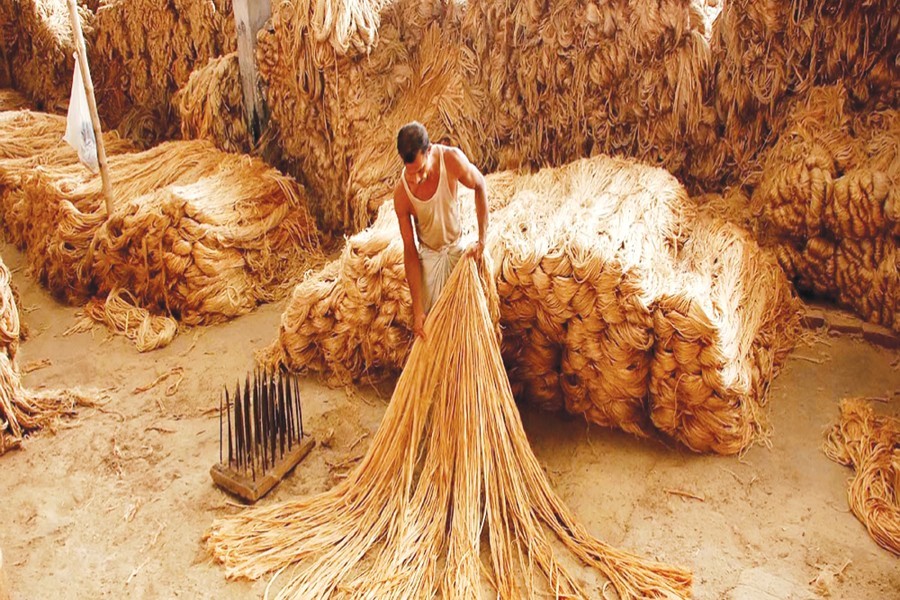From the various initiatives taken in the jute sector, it appears that the government is yet to firm up pragmatic and effective policies for revamping this highly potential sector. The last in the series of the plans is creation of a Tk 100 billion fund to facilitate low-cost loan for key stakeholders of the sector -- farmers, traders, manufacturers and exporters. It may be recalled that around a couple of months back, the Bangladesh Jute Mills Corporation (BJMC) announced a project to develop industrial villages for diversifying jute products in major jute producing districts. The government is also reportedly taking up a balancing, modernisation, rehabilitation and expansion (BMRE) project for the state-owned jute mills at a cost of $350 million. One must not be dismissive about the prospects of the projects -- already taken up or being planned. However, there may be reasons for not being sufficiently optimistic as these do not seem to cater to the urgent needs of the time -- research and development (R&D).
Jute, believed to be one of the key drivers of the economy has, no doubt, suffered much neglect over the decades due mainly to improper planning. In fact, high prospect of this fibre as the most environment-friendly and cheaply available one could not be made good use of. There was barely any systematic plan for continuous research to develop and diversify jute products to match consumer tastes and preferences at home and abroad. Stray initiatives were there, but lack of concerted efforts and financing was the main impediment to materialising those as commercially viable. As a result, despite being the second largest producer of raw jute, Bangladesh is still in the age-old sack manufacturing business, that too without much of a variety. The jute mills under the BJMC have been passing stress-free days as public entities with little or no urge to innovate new products and are content with only the traditional sacks. As for the private sector, it remains mostly busy exporting raw jute.
The aforementioned Tk 100 billion fund being planned for low-cost loans does offer a feel-good factor. However, to benefit from the project in real sense of the term is to prepare a detailed and comprehensive roadmap. And it is here that planning matters. Experts, including industry insiders, believe that one of the crucial areas where a big chunk of funds should go is research and development. In fact, the need emerged years ago following the commendable achievement of genome sequencing of jute plant by Bangladeshi scientists and researchers. Unfortunately, as of now, not much work has been done in taking the accomplishment forward.
It is commonly acknowledged that the only way the country's jute industry can shed much of its sluggishness is by producing more and more diversified products in keeping with consumers' preferences at home and abroad. It is more about product development, innovation and adaptation than just producing more traditional products or dishing out funds to energise state-owned sick mills. In order for the desired diversification to take place, the government needs to work out a systematic plan which among other things should provide ample scope for research and development.


